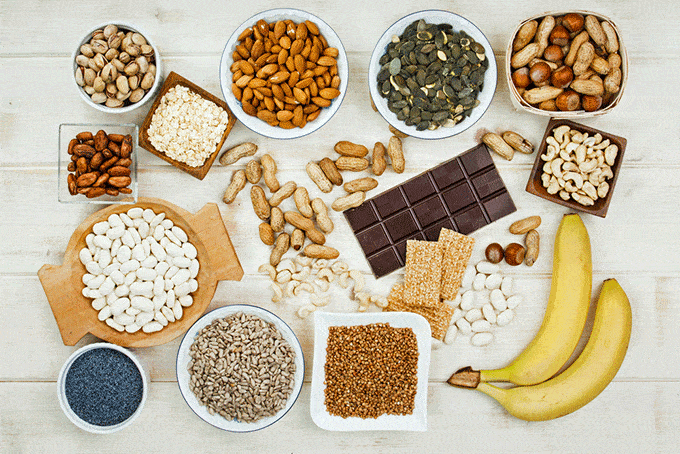Did you know magnesium also eases sleep disorders, anxiety and is a proven tonic for troublesome skin?I’ve studied the scientific papers and this magic mineral really does support the nervous system and keep skin looking clear and beautiful. So here’s all the medical know-how you need to harness the enormous benefits of magnesium.
What does magnesium do?
Benefits of magnesium for problem skin
Why is it likely you are magnesium deficient?
Consuming excess alcohol, salt, coffee (diuretics) and acidic fizzy drink - A high fibre/low protein diet
- Heavy periods
- Sweating
- Drugs including antibiotics
- Illness involving upset stomachs
How you know you need magnesium
Less well known symptoms of magnesium deficiency are:
- Noise-induced hearing loss
- Kidney stones
- Osteoporosis
- Trouble swallowing
- Eye twitches/restless legs/attention deficit disorder
- Anxiety and depression
With such a broad list of health problems linked to being low in this mineral it can be hard to work out if you need to boost your intake. Doctors say more magnesium-rich meals are better than supplements. The body has built-in mechanisms to naturally rid itself of excess minerals by excreting them. However, magnesium pills and powders are easy to overdose on and their absorption can be blocked by stomach acids. Ingesting too much can cause nausea, diarrhoea and, in extreme cases, heart palpitations or heart attack.
Thankfully, there are many safe ways it can be added to your daily beauty and recipe routines so you can reap all the benefits of magnesium. Lips and skin literally lap it up via mineral-packed makeup such as Lip Nourish™, which also has cold-pressed avocado oil to assist with skin barrier repair. Many magnesium oils, sprays and roll-ons promise to relieve migraines, muscle spasms and sleeplessness. Taking a bath with magnesium flakes (magnesium chloride), which are more potent than traditional Epsom salts (magnesium sulphate), can relax muscles, calm the nervous system and soothe dry, flaky skin caused by psoriasis and eczema.
Scientists have proved magnesium's potency as a skin protector by applying magnesium salts directly onto damaged skin which sped up healing - but be cautious of products claiming to remove skin tags, sun spots, moles and blemishes. These need to be assessed by a doctor. By far the best way to get an optimum magnesium level is through nutrient-filled foods that work with your body to restore natural equilibrium. The mix of food is important, as fibre tends to reduce magnesium absorption while probiotics (yoghurt) doubles them.
Here’s a list of 17 top magnesium rich foods to consume for radiant skin and a less-stressed life:
Fruits & Vegetables:
- Prickly pear - 88mg in one piece of fruit
- Spinach - 83mg in 1/2 cup of cooked spinach
- Chard - 80mg in 1/2 cup of cooked chard
- Potato - 44-55mg in a medium cooked potato with skin
Dairy/Dairy Alternatives:
- Soy cheese - 114mg in 50g of soy cheese
- Soy yoghurt - 70mg in 3/4 cup of soy yoghurt
- Milk - 24-27mg in 1 cup
Nuts & seeds:
- Pumpkin seed - 317mg in 1/4 cup
- Brazil nuts - 133mg in 1/4 cup
- Sunflower seeds - 115mg in 1/4 cup
- Almonds - 88-109mg in 1/4 cup
- Cashews - 90mg in 1/4 cup
Grains:
- Quinoa - 63mg in 125ml of cooked quinoa
Fruits:
- Banana - 32mg in 1 medium banana
- Avocado - 44mg in 1 cup
- Figs - 20mg in 100grams of fresh figs
Dark chocolate
- 292mg in 100 grams of bitter / dark chocolate (excellent!)
You can out the magnesium content of more foods on the Dietitians of Canada website. For more information about the nutrients, antioxidants and anti-inflammatories in food, download our free Beauty Nutrition Handbook.

